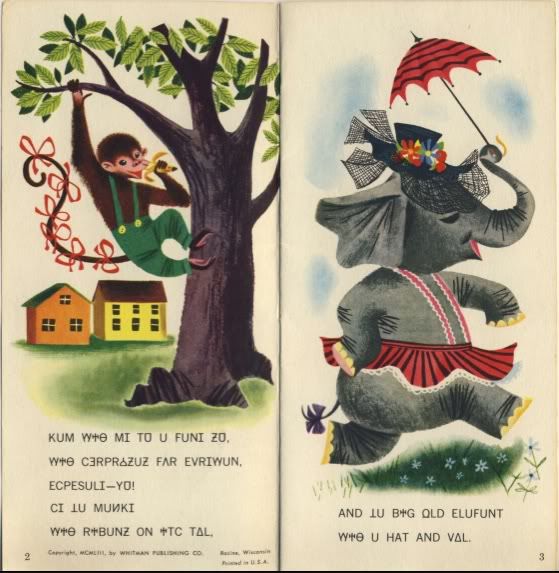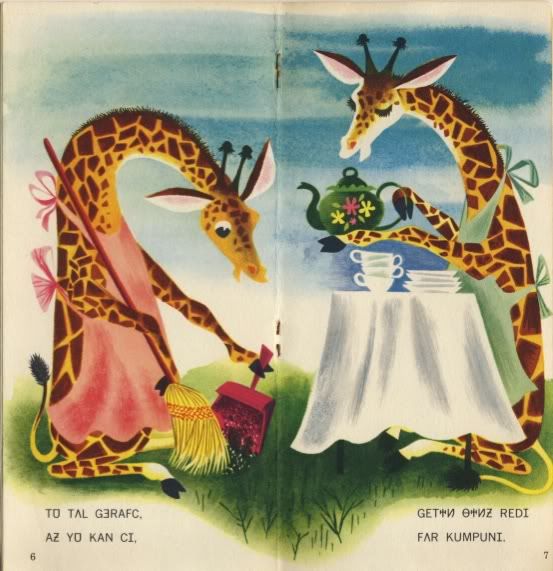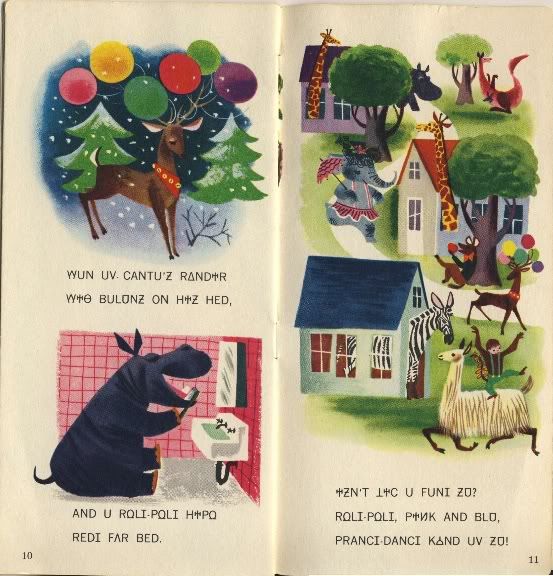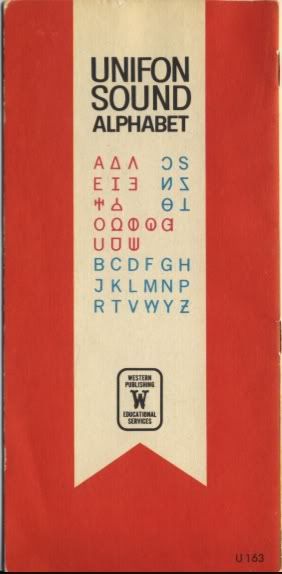Education: phonetics spelling
by Warren
leave a comment
Meta
SiteMeter
Brighter Planet
The UNIFON Surprise Zoo
This is a children’s book written in the UNIFON alphabet, a phonetic reimagining of English that was developed in the 1950s. I found this in my files a while ago and occasionally pass it out to my students, asking them first to decipher it (takes about 3 minutes), then to imagine a similar approach to music notation (nobody’s gotten very far).
The confusions of English orthography are well known, and complaints about them are hardly new. The UNIFON system is a little more than fifty years old, and while I’m not crazy about all the symbols themselves, I do like the idea — especially as a transitional alphabet for people who are just learning to read English for the first time — either adult illiterates, non-Anglophones, or children.
On the other hand, the glorious mish-mash of English spelling can be wonderfully revealing to the etymologically inclined; I’d hate to think of all the clues to a word’s provenance and semantic overtones being homogenized by a new symbol set that cares not whether the phonemes it’s grinding are originally Latin, Greek, Old Norse, Sanskrit or whatever.
Anyway, here’s a word on UNIFON’s creator:
John R. Malone, a Chicago economist, first developed the UNIFON alphabet in the 1950’s. He was working for the Bendix Corporation and was commissioned to develop a universal phonemic code for International Air Services. As a result of a tragic air crash and an immediate demand for quick communication in the air, English was adopted as the universal language among pilots and ground control. John R. Malone’s contract was cancelled. Instead, he then used his newly developed alphabet to teach his young son to read in one afternoon thereby recognizing the valuable tool he had created for teaching children to read. For many years he worked to pass on this new method of learning and it was used in a number of schools in the Indianapolis and Chicago area. John R. Malone continues to live in the Chicago area and is a devout supporter of UNIFON. He has seen the success of this reading method in classrooms and with individuals.
Here’s the complete symbol set — one symbol per sound with no overlaps or ambiguities.








